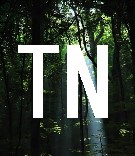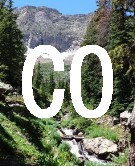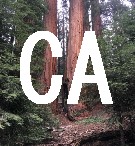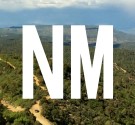| |
Canadian news organizations recently reported the second multi-witness
sighting in the past six weeks. The more recent sighting was in New
Brunswick. The previous incident was in Northern
Ontario.
A single animal could not have been responsible for both incidents. The
locations are too far apart.
American and Canadian news organizations almost never report on
sightings of bigfoots/sasquatches. It is not unusual for two separate
sightings to occur within a few weeks of eachother, but it is unusual
for two reports in that context to be fully investigated and reported
by mainstream journalists. That hasn't happened in a long time.
Has there been a change in Canada?
Consider these factors:
- A credible bigfoot/sasquatch sighting would qualify as news, at least
local news.
- It would definitely not bore the readership.
- Equally credible sightings have occurred in Canada for many years, but
were almost never publicized by any news organizations.
There must have been other reasons why the Canadian and American press
generally did not cover these stories in the past.
For nearly 30 years, beginning in the late 1970's, the general public
was repeatedly taught that "Bigfoot" was nothing more than a
recurring cartoon character on tabloid newspapers. The subject called
"Bigfoot" or "Sasquatch" belonged to a different category
of journalism all together. It wasn't fit for mainstream news, or mainstream
science.
Early July 2008: A full year had passed since the demise of the last goofy
grocery-store-checkout tabloid -- the Weekly World News (WWN). The WWN's
highly visible cover stories about the ficitional "Bigfoot"
character had routinely provoked mass mockery of the bigfoot subject for
decades. But by July of 2008 the WWN's grip over the attitude on the street
was fading fast. Challenging that fading influence were several new documentaries,
broadcast on various cable television channels, which presented the non-fictional,
scientific version of the subject. These documentaries featured intelligent
researchers, scientists and witnesses -- lots of serious people who were
not looking for a cartoon character. These programs helped disambiguate
the scientific concept of "bigfoot" (a population of
animals) from the tabloid notion of a singular mythical entitiy.
Toward the end of July a sighting was reported from Ontario -- 230 miles
northeast of Winnipeg. It was a motorist sighting. It was also a daylight
sighting. There were two witnesses. Two Cree tribal women were driving
to a remote area to gather summer berries. They observed an ~8 foot tall
sasquatch fleeing from the road into the brush. The two women drove home,
but returned with relatives who wanted to look for tracks. The family
searched for tracks and found one apparent good track in mud. The newspaper
article characterized the track as having six toes, but a photo of the
track shows that is an overlay of two tracks.
This Ontario sighting story went out over news wires. It was reported
all over Canada and in many newspapers in the United States.
Mid-August 2008: The Georgia body hoax builds momentum, then goes public,
then goes global. For a few days it is one of the top stories throughout
the English speaking world. Every major news organization in North America
notes that this story brings in loads more web traffic and web searches
on their web sites than any other story in that time frame.
Late August 2008: A sighting is reported in New Brunswick, Canada. It
was a motorist sighting. It was also a daylight sighting. There were four
witnesses this time. Two couples in two separate vehicles saw a tall sasquatch
cross a wide road then flee into the brush.
The two motorist couples did not know each other before the incident.
The vehicles were following each other down a rural road. After the sighting
the couple in the first vehicle flagged down the other vehicle to ask
if they saw the same animal. Fortunately they all did. Like the first
couple, the second couple were also adamant that it was a sasquatch. The
two couples exchanged contact information and carried on with their day.
One of the witnesses reported the sighting to a local newspaper. Shortly
thereafter a journalist investigated the story, and eventually contacted
all four witnesses, and then published an article about the incident. The
article was republished in a few regional newspapers in Canada, but the
story didn't go out across the news wires (as did the previous two-witness
Ontario sighting in July), so most people in Canada didn't hear about the
New Brunswick sighting.
Why would a two-witness sighting be a major wire story in Canada, but
then a four-witness sighting not be major wire story?
Possible answer: The Ontario sighting occurred two weeks prior to the
Georgia body hoax. Whereas the New Brunswick incident occured immediately
after the body hoax ... That may be why the New Brunswick story
wasn't widely reported ..
Will Canada enlighten itself faster than America?
Unlike Americans, Canadians generally do not perceive their nation as
too densely populated to harbor various elusive large wild animals. Because
of this, Canadian journalists might analyze sightings differently. Canadians
might not consider the BF topic to be settled, and concluded, and dismissed,
just because American journalists spin it that way.
The reporting of these two multi-witness incidents in Canada may set
a new precedent for mainstream news reporting. Multi-witness sightings
may be treated differently than single witness sightings, and thus may
be more worthy to cover in mainstream newss.
Witnesses in those cases should be more willing to go public with less
concern about social ridicule. Canadians may be more willing to believe
their fellow Canadians.
Requesting Anonymity
In the New Brunswick article the journalist was able to set aside common
journalistic policy with respect to anonymous quotes. Newspapers and journalists
generally do not quote people if those people refuse to allow their names
to be used in the article. But this incident was a special case. The journalist
needed to contact all the witnesses to see if they were all telling the
same story. Corroboration of the sighting was far more important than
identifying every witnesses who was quoted.
Scoring Credibility
If the credibility of a given report could be subjectively quantified,
it would be given a score of sorts -- a confidence score. That hypothetical
confidence score for an incident would be most influenced by the
confidence score for the witness. Thus if the confidence score
for an incident is high because the corresponding witnesses has a high
score for credibility, then the score for the incident necessarily doubles
when there are two equally credible witnesses to the same incident. And
the score quadruples when there are four equally credible witnesses.
Thus, the recent Ontario berry pickers report is twice as credible as
it would be otherwise, because there were two witnesses. The New Brunswick
sighting is four times as credible, because there were four good witnesses,
who are all adamant about what they saw.
The Skeptics' Explanation
Multi-witness reports help undermine the skeptic-propagated absurdity
(now also a Wikipedia-propagated absurdity) that sightings of these animals
occur persistently not because people are actually seeing what they describe,
but rather because humans have a deep-seated need to believe in
hairy giant hominids, and therefore they persistently misinterpret sightings
of known animals that way.
This pseudoscientific absurdity is substantiated by another pseudoscientific
notion: Sightings of bigfoots/sasquatches are a world-wide phenonmena.
Sightings of bigfoots/sasquatches are a "world-wide phenomena"
only in the sense that they happen in more places than just North
America. But sightings are not a "world-wide phenomena"
in the sense that they occur everywhere. Sightings happen in many
places in the world, but certainly not everywhere. Some continents have
basically no persistent history of sightings at all.
There is no pattern of modern credible reports in Africa, South America,
Europe, the Middle-East, Antartica, the Pacific Islands, or Scandinavia.
The parts of the world where sightings are persistent are within North
America, and Asia (including Russia and India and everywhere
in between), and Southeast Asia, and Australia.
They Might be Giants
Stories of giants should be differentiated from reported sightings
of bigfoot-like creatures.
If one looks long enough for stories mentioning "giants",
one may find them in either old literature and transcribed oral traditions
among most cultures around the world. But "giants" do not necessarily
indicate bigfoot-like figures. Fabled accounts of giant humans
are to be expected among world literature and oral tradition. These types
of characters would be an inevitable cultural archetype, because
there would have been contact with different tribes and individuals of
differing heights. Hyperbole would inevitably seep into re-told tales
about encounters with larger humans, and stories of "giants"
would be the result.
By the same token, if one looks long enough for stories mentioning
miniature people, those stories will be found throughout the world
as well. But they do not necessarily indicate the cultural memory of an
off-shoot line of smallish hominids, but rather just smaller humans
-- smaller relative to the observer. Mini-humans are another inevitable
cultural archetype.
Stories of giant, hair-covered, ape-like animals are not quite so inevitable,
and indeed do not appear among the literature and oral tranditions of
every culture.
More Pseudoscience from Wikipedia
The Wikipedia article about
the bigfoot topic has changed recently. It was stable for a long time
before that, after having built up over a few years, with contributions
and edits from many different people, finally settling on a slightly slanted
surface, but far more balanced that it is now, suddenly. Around the time
of the Georgia hoax, the Wikipedia article was significantly revamped.
It now reflects a very biased, skeptical slant. Older versions of this
article were only slightly biased toward the skeptical perspective.
Now the article is so blatantly one-sided that it appears to have its
own agenda of persuasion.
One of the first few sentences near the top of this Wikipedia article
proclaims: "The scientific community considers the Bigfoot legend
to be a combination of folklore, misidentified animals, and hoaxes."
Thus the Wikipedia editor who revamped has appointed himself to speak
universally for the entire scientific community ... even though
later in the article several scientists are mentioned who apparently do
not "consider the Bigfoot legend to be a combination of folklore,
misidentified animals, and hoaxes." The scientists mentioned in the
article have a very different perspective, or at least a mixed, unresolved
perspective, as do many, many other scientists out there.
There are several other deceptive assertions in this new version of the
Wikipedia article.
We will always treat Wikipedia respectfully, because Wikipedia is, in
general, an accurate, balanced, volunteer maintained information source
like the BFRO. Every Internet user has used Wikipedia and benefitted from
it. Its editors do their best to organize the relevant, accurate facts
about various topics.
The Wikipedia editor who recently revamped the bigfoot article, to reflect
a more skeptical perspective, probably thought he/she knew the rational
truth about this subject, and thought a more balanced treatment of the
subject would only perpetuate some nagging cultural tomfoolery.
A Wikipedia article is blatantly biased when it purports to speak for
the entire scientific community, and blatantly attempts to influence opinions
in a particular direction, especially one that is squarely at odds with
the general perspectives of all the scientific experts on the subject.
Until the Wikipedia editor is able to circulate a questionaire among the
entire scientific community, and accumulate results which support his
assertion, then Wikipedians are permitting an uncharacteristically biased,
slanted article about a topic that evokes mixed opinions within the scientific
community.
Does this particular Wikipedia editor understand the subject so much better
than those scientific experts, and so much better than many thousands
of eyewitnesses across North America? Which experts does this Wikipedia
editor rely upon ...?
If Wikipedia or the Discovery
Channel web site turns to a professional skeptic and non-scientist
like Benjamin Radford, then those web sites are only seeking to propagate
a predictably biased and unscientific perspective. This present version
of the Wikipedia article now stinks of Ben Radford, as it relies heavily
on his skewed Skeptical Enquirer articles.
Unlike Wikipedia editors, Radford's literary niche does not make him
an objective presenter of any subject. His career specialty as a professional
skeptic is to present a very one-sided rhetorical position. He
only takes the skeptical angle, and presses that angle the best
he can. But that's his job, as an advocate of a pre-determined intellectual
conclusion.
Any publisher who develops a summary of this topic from Radford's articles
in Skeptical Enquirer, is not seeking any balance or objectivity. Radford's
overall skeptical perspective is one that many may agree with, but also
one that many thousands of people would adamantly and reasonably disagree
with.
There are two diametrically opposed, but reasonable, viewpoints on this
topic. The BFRO web site indeed takes a one-sided position on the core
question of their existence. We take that position not because
it's our job to be one-sided about open questions, but rather because
so many people in the BFRO have had experiences with these animals --
saw them, heard them, or found their tracks, etc. Most BFRO members feel
very confident arguing for their existence, so it feels inappropriate
for us to speak to the issue of their existence as if it were still an
open question, for us. At this stage it is natural for the BFRO to direct
our debating advocacy and scientific activities only on one side of the
argument.
A resource like Wikipedia should perform the role of presenting both sides
of the argument. Hence Wikipedia should not argue for one side only. The
current version of the bigfoot article on Wikipedia represents one
side only -- a purely skeptical Radford-like viewpoint.
|
|



















